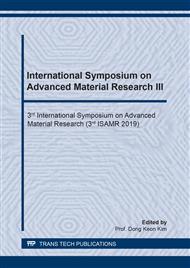p.59
p.64
p.70
p.77
p.83
p.88
p.93
p.99
p.107
Formulation Development and In Vitro Evaluation of Buccal Tablets of Ramipril
Abstract:
The main objective of the present investigation was to develop buccal tablets of ramipril, to bypass the first pass metabolism and to improve its oral bioavailability. Ramipril, an ACE inhibitor used in the treatment of hypertension undergoes extensive first pass metabolism and about 25% of the drug reaches the systemic circulation. A unidirectional, bilayered mucoadhesive tablet of ramipril was prepared using HPMC as polymer by direct compression technique. Initially, a backing layer was made by using ethyl cellulose, onto which the drug containing layer as placed and recompressed to get a bilayered tablet. The buccal tablets were evaluated for various parameters such as weight variation test, thickness, hardness, friability, in vitro swelling studies, in vitro mucoadhesion study and in vitro dissolution study. Among the different formulation, the formulation (F1) prepared using 5% HPMC as polymer exhibited satisfactory performance over the other batches and considered as an ideal batch. The release of the drug from the tablets exhibited zero order kinetics and the mechanism of release was governed by diffusion process.
Info:
Periodical:
Pages:
83-87
Citation:
Online since:
April 2020
Authors:
Keywords:
Price:
Сopyright:
© 2020 Trans Tech Publications Ltd. All Rights Reserved
Share:
Citation:


